The lifelong exercise that keeps Japan moving

 Keith Bedford and Shiho Fukada
Keith Bedford and Shiho FukadaTens of millions of Japanese perform a specific exercise routine at least once a week. Could rajio taiso help people live longer lives?
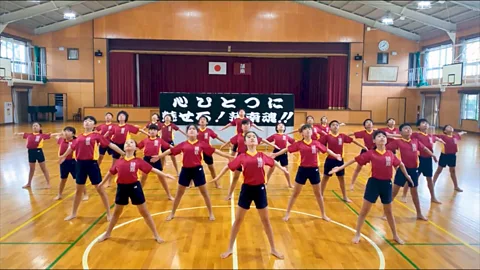 Keith Bedford and Shiho Fukada
Keith Bedford and Shiho FukadaKnown by heart across generations, this uniquely Japanese routine has a surprising origin in the US.
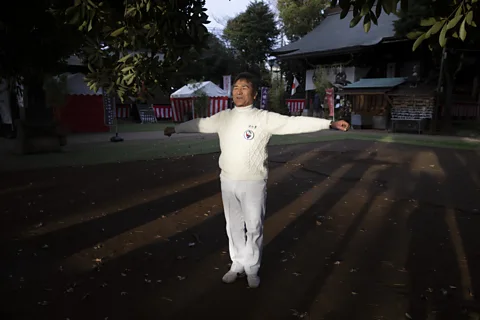 Keith Bedford and Shiho Fukada
Keith Bedford and Shiho Fukada“Rajio taiso”, or radio calisthenics, is a short exercise routine broadcast daily on Japan’s national radio, streamed on YouTube, followed in parks and schools every day – sometimes several times a day – by all generations of Japanese people.
There are three routines in rajio taiso. The first, “dai-ichi”, is the one that every person in Japan will be most familiar with. Taught from a young age in school, this routine is designed to be accessible to anyone. The second, “dai-ni”, and third, “dai-san”, increase in physical activity and are aimed at younger crowds.
Rajio taiso encourages using only the momentum and weight of your own body without the need for any equipment. The three minute exercise mostly require planting your feet in one spot, shoulder-width apart. This makes it ideal for office workers, school children, the young and the elderly to do from behind desks, in groups, at the park, at home – anywhere.
Dai-ichi is made up of 13 movements and begins with gentle raising of the arms above the head. In movement two, arms start crossed across the chest and are swung down like pendulums until they finish outstretched either side. This is accompanied by a gentle bob of the knees – hardly enough to break a sweat.
By movement 11, exercisers move on to modest star jumps in time with music. This is about as rigorous as the routine gets. The last two movements repeat steps one and two to allow for some time to cool down.
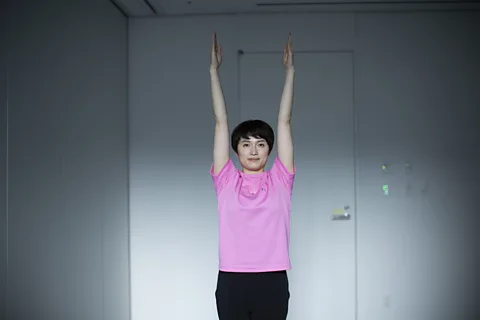 Keith Bedford and Shiho Fukado
Keith Bedford and Shiho FukadoThe great thing about rajio taiso is to be able to activate the entire body if you go through the whole exercise – Arisa Oshimi
 Getty Images
Getty ImagesSome people believe rajio taiso is the key to their longevity, but the routines’ origins can be traced back to a public health initiative in the US.
In the 1920s, local radio stations in six US cities broadcast 15-minute long exercise routines accompanied by a pianist. These slots were sponsored by the Metropolitan Life Insurance Company, and radio calisthenics was born.
Meanwhile, the outlook for Japanese people at this time was not great. Average life expectancy in 1920 was 42 years, tuberculosis was common and for life insurers business was hard.
Concerned with how to improve public health, two representatives from Japan's health insurance bureau of the post office visited Metropolitan Life Insurance Company and were impressed with the routines, taking home the idea of daily exercise broadcasts.
By the mid-20s, rajio taiso was launched en masse. To teach the routines, workers at the national postal service – all 20,000 of them – performed the routines on the streets each morning, pausing their rounds as the radio show began. Since then, rajio taiso has been broadcast every day, stopping only briefly after WWII to have some of the more militaristic movements changed.
 Keith Bedford and Shiho Fukada
Keith Bedford and Shiho FukadaI would not feel comfortable standing up abruptly and doing a stretch at work by myself. But when we all do it together, I don’t feel shy – Michiaki Araki
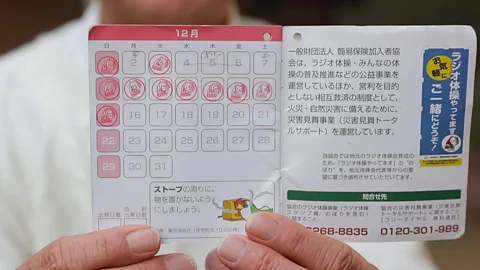
Rajio taiso is instilled in school children from a young age. If you ask a Japanese adult how they spent their summer holidays as a child, many will reply that they are synonymous with the routines.
Rising early, attendance card in hand, the children would complete the routines in neighbourhood groups. The cards are stamped after a student takes part in one of the early morning routines, with prizes handed out for those children who complete a perfect card.
The cards themselves originate from another initiative also dating from the 1920s designed to get children to attend school on time, rather than sleep late,. Stamps were first give out at “hayaokikai”, or “early-riser meetings”, to prove that the students had attended school in the morning. Supposedly, some children then returned to bed after collecting their stamps. Someone came up with a plan to make the children perform rajio taiso at these early morning meetings, after which they would have their cards stamped. With their blood pumping, the children were too awake to go back to bed.
According to the Japanese government, "as many as 30 million copies of the attendance cards were printed, which had a substantial impact on the spread of the exercises".
Filmed before Covid-19 social distancing measures
 Keith Bedford and Shiho Fukada
Keith Bedford and Shiho FukadaI want to continue doing it forever – Mitsuo Hagiwara
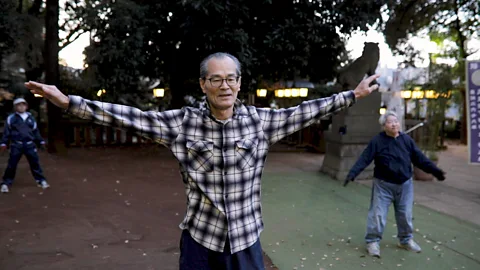
While exercise is linked to an increase in muscle injury in older people, light exercise routines can have a very positive impact on their independence. A review of studies on exercise plans for the aged found that walking speed and time taken to stand up out of a chair can be positively improved in even the most frail individuals with light stretching.
However, the link between exercise and mental aging in older people is less clear. While there is a lot of encouraging evidence linking exercise with protection from cognitive decline, the mechanism by which this happens is poorly understood.
Certainly, for followers of rajio taiso, the daily stretches seem to do the trick. As familiar as a nursery rhyme, they remain a society-wide daily regimen which will surely continue to brighten people’s mornings for generations to come.
Text by William Park; video and photos by Shiho Fukada and Keith Bedford
For more articles like this, head to Japan 2020 - a BBC.com collection dedicated to telling the unexpected, illuminating and inspiring stories from around Japan
